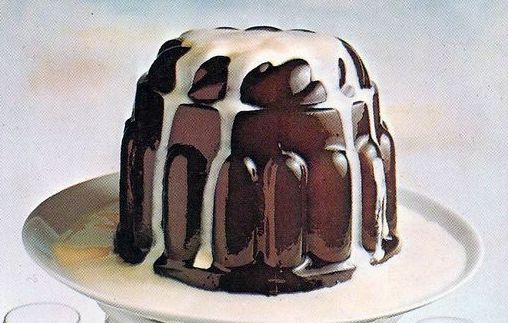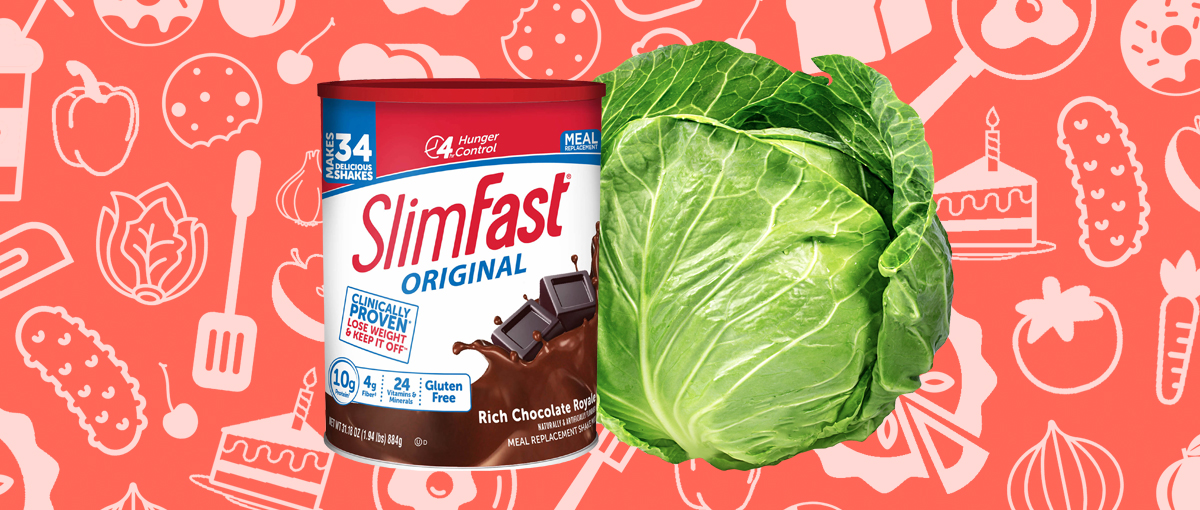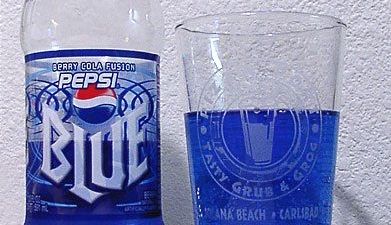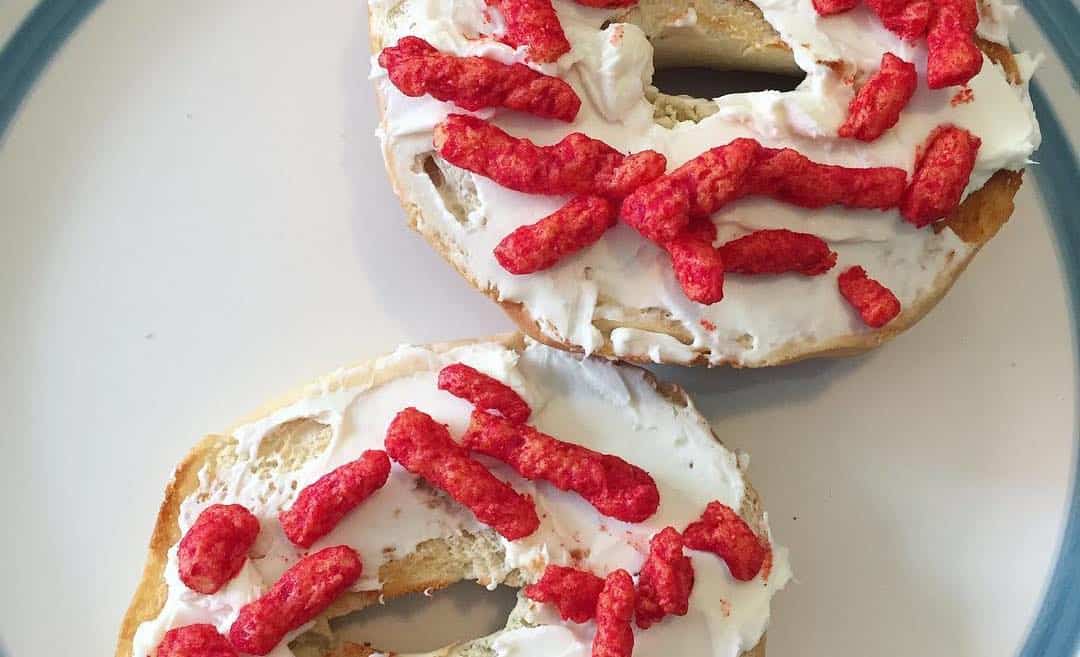Even those who don’t have a sweet tooth will admit there’s a dessert option out there that makes them drool. Who could blame them? Dessert (for most people, anyway) is usually the best part of going out to dinner. And with so many choices — including brownies, cupcakes, cronuts, macarons, unicorn-shaped cakes, and much, much more — it’s almost impossible to find a sweet after-dinner treat that isn’t likable. We dare you to try!
Flashback to the last century, however, and you’d be singing a different tune. Back then, desserts weren’t as photogenic as they are today. And sadly, they probably wouldn’t make you full-on drool. In fact, they were pretty weird (if not inedible!), and definitely weren’t something you’d come across all over Instagram (mainly because there was no Instagram — ha!). However, these treats were in fact real and were, in fact, being eaten and advertised. It might be hard to believe, but it’s true.
If you think I’m being dramatic, here are 15 examples of horrendous retro desserts that deserve to stay in the past.
1. Tuna Jell-O Pie
Uhm, what?
First of all, Jell-O and tuna shouldn’t be anywhere near one another – especially not combined in a dessert. In 1965, however, Betty Crocker didn’t seem to mind the strange combination. In fact, she described her creation — which is filled with lemon-flavored gelatin, tomato sauce (what?), vinegar, Worcestershire sauce, pimiento-stuffed olives, and tuna salad — as being “pretty as can be.”
Despite this dish’s cringe-worthy ingredients, gelatin salads and pies were quite popular even before the ’50s and ’60s. In fact, jellied treats like this one date back to medieval Europe. Back then, these dishes were reserved for the elite, served as fancy molded centerpieces on the tables of nobility. Why? Well, because rendering collagen from animal bones isn’t exactly a walk in the park. According to Lynne Belluscio, the executive director of the LeRoy Historical Society, the process is time-consuming and “not for the faint-hearted.”
2. Lardy Cake
Leave it to America to create a cake made of lard.
I’m from the South, so I’m no stranger to lard. (Even so, I’d never actually eat it.) Lard is literally the fattiest part of the pig. While many argue that it’s a healthier alternative to butter, I beg to differ. It’s packed with saturated fat. Sorry, Marguerite, but anyone who’s willing to eat a Lardy Cake is asking for a heart attack.
However, if you are interested in giving this treat a try, know that it’s a traditional English treat that’s typically served on holidays. And according to My Favourite English Recipes and History on Facebook, this cake dates back to the 15th century.
3. Happiness Tree Cake & Christmas Pudding Cake
Not sure how much happiness these cakes would have brought me.
Apparently, these two outrageously sweet dishes were a Christmastime favorite in the ‘60s. (After eating all of that sugar, you’d have to be delusional, right?) The Christmas Pudding Cake calls for 50 marshmallows! That’s insane. Let’s not forget about that oh-so-good-for-you butter icing. These cakes are the equivalent of eating too much raw cookie dough, even though your mother said not to.
Fun fact: Did you know that the marshmallow is actually a plant? It can be found in Europe and western Asia, and can grow as tall as six feet! What’s even weirder, is that marshmallows were used in 9th century BCE to heal wounds and soothe sore throats. The Greeks created a balm from the plant’s sap to aid bee stings and toothaches. Who would have thought this sticky sweet s’ mores ingredient could have so many uses?
4. Coffee Jelly
Why must everything be covered in gelatin?
I’m all for coffee-infused desserts, but this recipe is a bit much. (The title alone gives me the chills.) Who wants their coffee in gelatin form? Not me, that’s for sure. This recipe is a four-ingredient disaster – hot, strong coffee, sugar, “envelopes of unflavored gelatine,” and one tablespoon of lemon juice. To make matters worse, the recipe suggests topping this monstrosity with custard sauce. No thank you, please.
In the 1400s, gelatin was used as a way to temporarily postpone spoilage for jelly-covered meats and veggies. Because the majority of Catholics refrained from eating meat on Fridays, late-medieval cooks created fish jellies.
5. Prune Whip
Hard pass.
If you’re a fan of prunes, you may actually like this dish. Prune Whip is exactly what it sounds like: pitted prunes, egg whites, a dash of salt, a pinch of sugar, and heavy cream (give or take a few ingredients) whipped together to form one grotesque concoction of a dessert. That like of ingredients alone is enough to make us shudder.
While Prune Whip may sound like an elderly person’s dessert, it’s actually a children’s dish. In the early 1900s, scientists found that kids had dietary needs that differed from their parents. Unfortunately, this meant bland recipes and simply-prepared meals, including boiled potatoes, lamb chops, and yes, Prune Whip.
6. Rich Apple Fool
So much food coloring.
This looks wet and tasteless, which wouldn’t surprise me at all considering it’s filled with “green coloring.” Made with two pounds of “cooking” apples (is there a difference between cooking apples and regular apples?), castor sugar, orange juice (or water — how flavorful!), and cream, the Rich Apple Fool is definitely a dessert you’d want to skip out on.
In ancient times, food coloring wasn’t as scary and as toxic as it was in the 1800s. Back then, food coloring meant adding natural ingredients like herb and plant extracts, and fruit and vegetable peelings, to enhance the color of certain foods.
7. Cranberry Holiday Surprise
Hellmann’s is at it again.
Rule of thumb: Anything with the word “surprise” in it should be avoided at all costs. I repeat, anything. Apparently, this fancy number was a holiday staple. And I thought regular ole cranberry sauce was bad. Their selling point? It’s “even easier to make than regular fruit-gelatin salads!” Pretty enticing, considering everyone and their mother was addicted to fruit-filled gelatin back then.
Curiously enough, mayonnaise used to be a fancy way to give a dish some pizzaz. According to Slate, in 1838, Delmonico’s (one of the most prestigious restaurants in Manhattan) offered restaurant-goers a choice between chicken or lobster doused in mayonnaise.
8. Cranberry Candle Salad
Let’s light it on fire!
If you thought Cranberry Holiday Surprise was pushing it, just wait until you get a load of this recipe. Cranberry Candle Salad is exactly what it sounds like – a cranberry “salad” made with (you guessed it!) mayonnaise and gelatin. But wait, there’s more. This salad doubles as a candle. Way to up the ante, Hellmann’s.
Gelatin desserts weren’t a thing until the end of the medieval era. Even then, some of the dishes were stabilized by pectin (a jelly-like substance found in the cell walls of fruits) instead of actual gelatin.
9. Fiesta Peach Spam Bake
How intriguing.
How could one say “no” to a dessert filled with potted meat and canned fruit? I mean, questionable meat was all the rage in the ’50s. And what’s with the “fiesta” in the title? I mean, while I can’t speak for others, this clearly isn’t a party I’d want to be invited to.
According to The Oxford Encylopedia of Food and Drink in America, Spam was invented as a way to sell pork shoulder during the Great Depression. Apparently, its name was chosen (by Ken Digneau, the brother of a Hormel executive) via a naming contest in the ’30s. “Spam” was meant to represent “spiced ham.”
10. Frozen Fruit Salad
Of course, there’s marshmallows and mayonnaise in this salad.
Remember those small fruit cups offered in your elementary school cafeteria? Well, this recipe is the adult version of that, except it’s frozen and slathered in mayonnaise. Let’s just read these ingredients off, shall we? Pineapple tidbits, lemon juice, envelopes unflavored gelatine (yet again), cream cheese, mayonnaise, marshmallows, sliced bananas… the list, sadly, goes on and on.
Why a dessert recipe should include mayonnaise is beyond me. But the actual history behind Richard Hellmann is pretty cool. In 1903, Hellmann moved to New York City where he met his beloved wife Margaret Vossberg. Her parents owned a delicatessen, which inspired him to open a shop of his own. There, on Columbus Avenue, Hellmann created his very first batch of homemade mayo (some argue his wife created the recipe!). His customers loved the spread so much, that he began selling it in bulk to stores around the city.
11. Ham and Bananas Hollandaise
Who wouldn’t want a tray full of bananas doused in hollandaise sauce? Yum.
I’m not sure if this is supposed to be a dinner dish or a dessert dish, but considering the amount of glazed fruit, I’m going to assume the latter. This crazy creation calls for six medium bananas, lemon juice, six thin slices of boiled ham, hollandaise sauce, light cream, and three tablespoons of prepared mustard. And don’t forget to top it with pineapple glaze and maraschino cherries. (Yuck!)
Hollandaise, just in case you didn’t already know, is a lemon-flavored butter sauce made with egg yolks. Its origin, although it sounds Dutch, is French. The first published description of this rich, buttery sauce appears in La Varenne’s 1653 cookbook, The French Cook.
12. Prune Whip Pie
At least the crust looks elegant.
Prunes and marshmallows must have been a pantry staple back then because this recipe is filled with both. Made with two cups of marshmallows, 1/2 teaspoon of instant coffee, chopped cooked prunes, and a bit of lemon juice, this Prune Whip Pie is bound to send you running… to the restroom.
According to the Dallas Observer, Prune Whip had its moment of fame in the ’50s when President Dwight D. Eisenhower declared the strange dessert his favorite food. That’s pretty impressive, considering the original (America version) recipe was published in the Frannie Farmer cookbook in 1918.
13. Blueberry Cream Cheese Salad
The ingredients make it sound like this is a dessert, but is it tho?
Can a salad be a dessert, too? Is it like the rhombus/square situation? Who knows. All I know is that this “salad” looks disgusting. At least it’s not slathered with mayonnaise. The first layer of this strange dish, however, is covered in black raspberry-flavored gelatin. I’m not sure if that’s any better. (There’s also a layer of cream cheese hiding underneath that, so…)
The origin of this dish can be traced back to the oh-so-popular Perfection Salad of 1904. After the dish snagged a third-place win in a cooking contest, gelatin salads became a dinnertime favorite.
14. Mayonnaise Jell-O
Speaking of mayonnaise. . .
Did these people have no morals? I’m sorry, but mayonnaise does not a “masterful meal” make. “Don’t tell the family how easy it was, surprise them.” Oh, they’ll be surprised alright. But truly, the worst part of this entire advertisement is the fact that the Knox family thought their meals were “nutritious.”
In 1908, Rose Knox revolutionized the gelatin business. By 1913, she established a five-day workweek with two weeks’ paid vacation per year and paid sick leave. (Which was completely unheard of then!) Knox also made it through the Great Depression without making one lay off. What’s more? The company grew at a rate of five percent per year!
15. Pineapple Mint Freeze
Better Homes and Gardens really had a thing for fruit-filled frozen gelatin back then.
At first glance, I thought this recipe may be a refreshing smoothie or iced beverage. Sadly, it’s just a frozen gelatin loaf made with canned pineapple juice (they couldn’t even splurge on freshly squeezed?), unflavored gelatin (I’m seeing a pattern here), mint-flavored apple jelly (no, thank you.), and whipping cream. Oh, and let’s not forget the lettuce. Because that’ll make it look presentable.
Quick fact: According to the Jell-O Gallery, the first Jell-O flavors were orange, lemon, strawberry, and raspberry. Lime wasn’t introduced until 1930.








